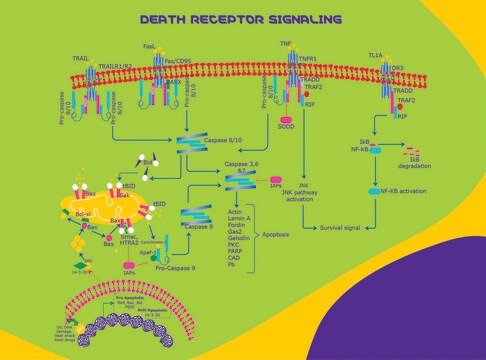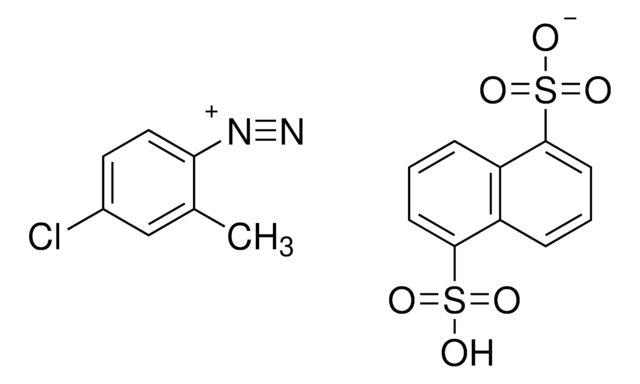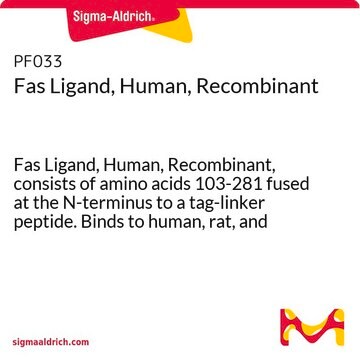GF092
TRAIL Protein, Recombinant human
Human TRAIL (TNF-Related Apoptosis Inducing Ligand), also called APO2 Ligand, is a cytotoxic protein which activates rapid apoptosis in tumor cells, but not in normal cells.
Sinônimo(s):
Apo2 Ligand
About This Item
Produtos recomendados
fonte biológica
human
Nível de qualidade
recombinante
expressed in E. coli
Ensaio
>98% (SDS-PAGE and HPLC)
forma
solid
peso molecular
19.6 kDa
fabricante/nome comercial
Chemicon®
técnica(s)
cell culture | mammalian: suitable
Impurezas
<0.1 ng/μg Endotoxin (of TRAIL/Apo2L; 1EU/μg)
entrada
sample type hematopoietic stem cell(s)
adequação
suitable for molecular biology
nº de adesão NCBI
nº de adesão UniProt
Condições de expedição
dry ice
Informações sobre genes
human ... TNFSF10(8743)
Descrição geral
Aplicação
Ações bioquímicas/fisiológicas
forma física
Armazenamento e estabilidade
Informações legais
Exoneração de responsabilidade
Código de classe de armazenamento
11 - Combustible Solids
Classe de risco de água (WGK)
WGK 3
Certificados de análise (COA)
Busque Certificados de análise (COA) digitando o Número do Lote do produto. Os números de lote e remessa podem ser encontrados no rótulo de um produto após a palavra “Lot” ou “Batch”.
Já possui este produto?
Encontre a documentação dos produtos que você adquiriu recentemente na biblioteca de documentos.
Nossa equipe de cientistas tem experiência em todas as áreas de pesquisa, incluindo Life Sciences, ciência de materiais, síntese química, cromatografia, química analítica e muitas outras.
Entre em contato com a assistência técnica







